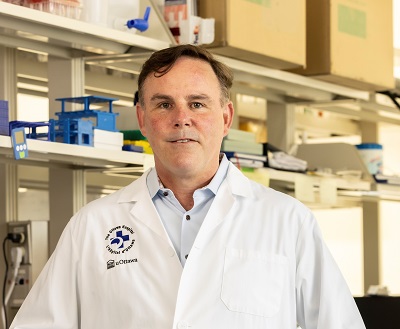 "This research could lead to the development of new approaches to enhance muscle regeneration during aging and in people with degenerative muscle diseases," said Dr. Jeff Dilworth.When faced with a major muscle injury, muscle stem cells need to find the right balance between repair and self-preservation. In essence, they need to create new muscle fibres to repair the immediate damage, while also preserving enough stem cells for future repair.
"This research could lead to the development of new approaches to enhance muscle regeneration during aging and in people with degenerative muscle diseases," said Dr. Jeff Dilworth.When faced with a major muscle injury, muscle stem cells need to find the right balance between repair and self-preservation. In essence, they need to create new muscle fibres to repair the immediate damage, while also preserving enough stem cells for future repair.
New research published in Developmental Cell shows for the first time that upon injury, muscle stem cells prioritize immediate repair over self-preservation and then backtrack to replace the stem cells later. Dr. Jeff Dilworth and his team led the study, which also showed that a protein called negative elongation factor (NELF) plays a key role in ensuring enough muscle progenitor cells are produced to complete both tasks.
“After a catastrophic injury, muscle stem cells go all in to produce enough cells to repair the muscle fibers at the expense of the stem cell niche, and then the progenitors cells that were not incorporated into new muscle fibres repopulate the stem cell niche,” explained Dr. Dilworth. "This research could lead to the development of new approaches to enhance muscle regeneration during aging and in people with degenerative muscle diseases."
Authors: Robinson DCL, Ritso M, Nelson GM, Mokhtari Z, Nakka K, Bandukwala H, Goldman SR, Park PJ, Mounier R, Chazaud B, Brand M, Rudnicki MA, Adelman K, Dilworth FJ.
Funding: Canadian Institutes of Health Research, Harvard Medical School, Ontario Graduate Scholarship, Mitacs, QEIIST, National Institutes of Health. All research at The Ottawa Hospital is also enabled by The Ottawa Hospital Foundation.
Core resources: StemCore, Flow cytometry, Imaging
The Ottawa Hospital is a leading academic health, research and learning hospital proudly affiliated with the University of Ottawa.
Media Contact
Jenn Ganton
613-614-5253
jganton@ohri.ca
